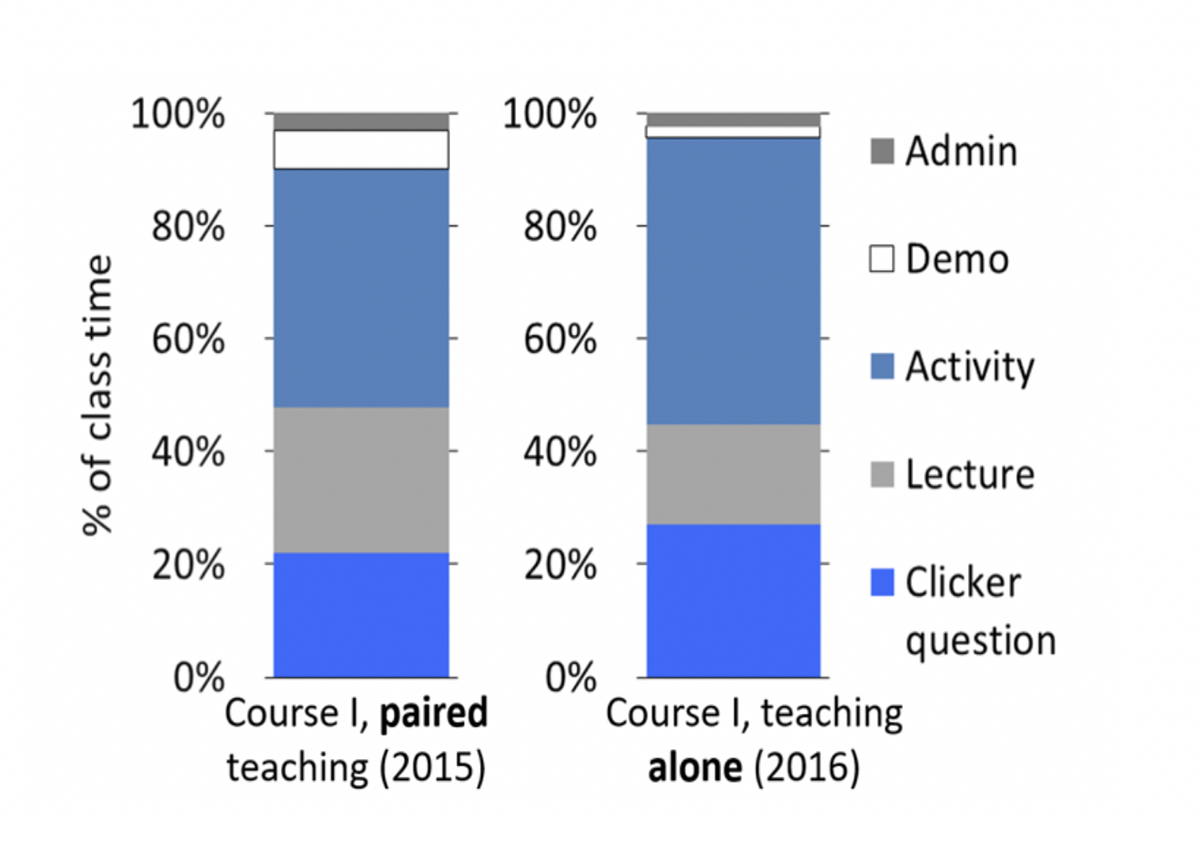The impact of paired teaching
UBC Science’s paired teaching pilot demonstrated that paired teaching is an effective way to introduce new faculty to evidence-based teaching strategies (Stang et al., 2017). New faculty continued to use the strategies they learned in the program when later teaching the same course alone, and they also transferred the use of these strategies to new contexts, such as introducing them in courses that were traditionally lecture-based.
Benefits to departments, faculty members, and students
Paired teaching aligns well with recommendations for successful change strategies in higher education. It is low-cost, works in different contexts, and is sustainable as new faculty members can return as experienced ones.
Participation in the program can support tenure and promotion packages, complements other professional development opportunities, and provides a deeper and department-specific context.
Students also benefit from learning in a pair-taught classroom.
- "75% of students reported that having two instructors in the course was a small or large advantage—compared to similar courses with just one instructor." (Stang et al., 2017)
- "55% of students reported that having two instructors had a positive effect on their understanding of the course material." (Stang et al., 2017)
Program cost
The main cost of a paired teaching program involves arranging coverage for the section that either the new or experienced faculty member would otherwise teach. Relative to other costs for new faculty, however, this is a small, one-time investment that has great potential to positively influence a new faculty member’s teaching strategy.
UBC Science offers departments a 0.5 course release ($5,250) for each new faculty member participating in paired teaching, in addition to the support of a Skylight Science Education Specialist.
Implementing a paired teaching program in your department
To implement a paired teaching program in your department or institution, please download this published article containing recommendations and suggestions.

